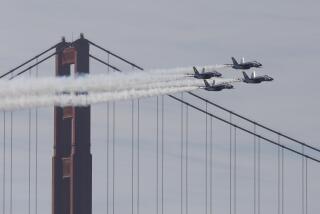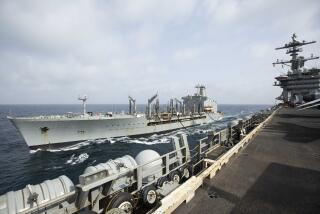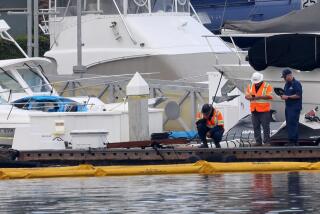Ship hit by errant drone returns to San Diego
The guided-missile cruiser struck by an aerial-target drone during a training exercise off Ventura County returned to San Diego on Sunday for assessment and repair, officials said.
The Chancellorsville was struck on its port side by an BQM-74 series drone. Two sailors suffered burns.
The ship returned to San Diego under its own power. It had set sail Tuesday and was scheduled to be at sea another seven days, officials said.
Navy specialists are examining the extent of damage to the ship. Other technicians are investigating the possible cause of the drone malfunction.
The drone, controlled from Point Mugu, was being used during a routine exercise meant to test the ship’s radar system’s tracking ability. The test was not designed for the ship to shoot down the drone.
The two sailors were treated on the ship and did not require hospitalization, officials said.
The BQM-74 series is a turbojet-powered aerial drone which is used for 80% of the Navy’s aerial exercises to provide “a realistic method of training sailors and airmen against airborne threats,” according to its maker, Northrup Grumman Corp. The Air Force and international military services also use the BQM-74.
The drone has several different models. Some BQM-74 series models can perform at an altitude of less than 10 feet at speeds up to 525 knots, the company said.
Navy officials did not have any immediate records of any similar accident in which a drone struck a ship.
At 13 feet in length and a wingspan of nearly six feet, the cigar-shaped BQM-74E can stay aloft for more than an hour and be launched from a ship or land-based station.
ALSO:
Drone malfunctions during Navy training exercise, injuring 2
Chino police arrest men in shooting death of check-cashing clerk
10 people injured at Coliseum during and after USC-Stanford game
Twitter: @LATsandiego
tony.perry@latimes.com
More to Read
Sign up for Essential California
The most important California stories and recommendations in your inbox every morning.
You may occasionally receive promotional content from the Los Angeles Times.










